White River Light Station

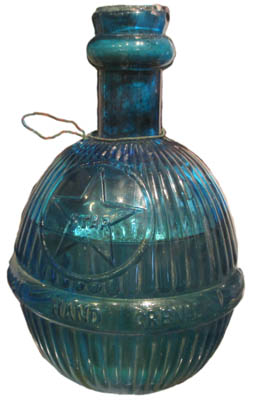
A rare find: a
fire-extinguishing grenade.
fire-extinguishing grenade.
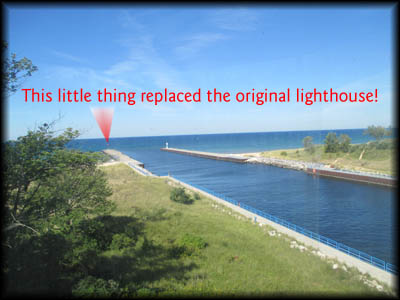
This photo, taken from the tower, shows the canal that connects Lake Michigan, seen here, and Lake White. The arrow in the photo points to the wee little beacon that replaced the beautiful White River Light Station.
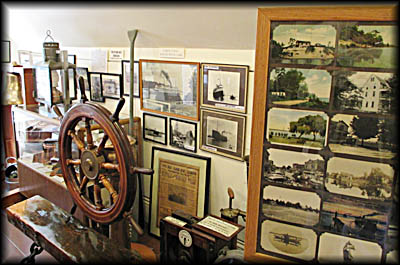
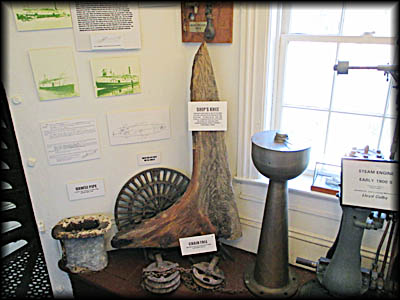
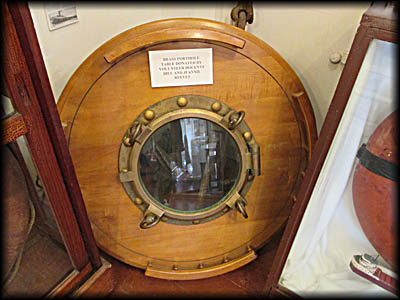
A few interior shots of the museum.
According to a map I found on the State of Michigan’s official website, 124 lighthouses stand along its vast shoreline. During a planned trip to that state, I decided to visit one. My traveling companion and I chose the White River Light Station Museum as the one to see, mainly because of its proximity to our location and because it remained open after Labor Day.
Despite its name, it stands not along the White River but rather on the western edge of White Lake. Built in 1875 and made operational in 1876, it shined light upon the entrance from Lake Michigan into White Lake until the Coast Guard decommissioned it 1960, replacing it with a light beacon at the end of a pier that juts into Lake Michigan. Ten years after closing, the White River Light Station reopened to the public as a museum.
Despite its name, it stands not along the White River but rather on the western edge of White Lake. Built in 1875 and made operational in 1876, it shined light upon the entrance from Lake Michigan into White Lake until the Coast Guard decommissioned it 1960, replacing it with a light beacon at the end of a pier that juts into Lake Michigan. Ten years after closing, the White River Light Station reopened to the public as a museum.

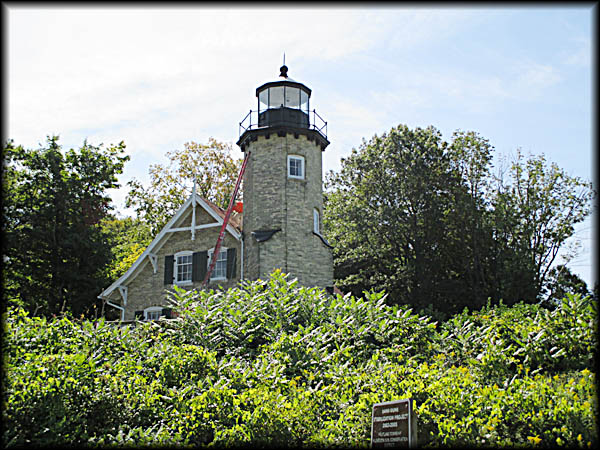
White River Light Station
Its architect merged the lighthouse tower with the keeper’s house, creating a beautiful brick structure the Joneses next door surely envied. The grounds proper don’t go far, but you can walk out to the aforementioned pier that juts into Lake Michigan, exploring some of the sand dunes and beach along the way. Or, if you head south, you can stroll beside White Lake.
The museum occupies the house’s second floor, the first being reserved for the small visitors center and staff use. Upon our arrival we parked in a small lot there for patron use, then walked to the house to purchase our admission, which cost $4 for adults and $2 for children. Although small in size, the museum curators have stuffed every inch of its two rooms and a short hall with photos, artifacts, and information signs. To get through them all will take some time. A lifelong Great Lakes mariner named Lloyd Elon Colby, who died in 1998, constructed many of the excellent displays, including the one holding the bell of the Liberty Ship Frederick Remington.
The museum occupies the house’s second floor, the first being reserved for the small visitors center and staff use. Upon our arrival we parked in a small lot there for patron use, then walked to the house to purchase our admission, which cost $4 for adults and $2 for children. Although small in size, the museum curators have stuffed every inch of its two rooms and a short hall with photos, artifacts, and information signs. To get through them all will take some time. A lifelong Great Lakes mariner named Lloyd Elon Colby, who died in 1998, constructed many of the excellent displays, including the one holding the bell of the Liberty Ship Frederick Remington.
Of the various items and artifacts here, my traveling companion thought it interesting the museum held many items from other lighthouses. A fire extinguisher grenade most attracted my attention, mainly because I’d never heard of such a thing. This firefighting apparatus first appeared in nineteenth century England. The life saving service in charge of American lighthouses ordered all “remote or wooden lighthouses” to have at least twelve of these on hand. Made of colored glass, they originally contained a solution of tetrachloride, a toxic mixture of chloroform and chlorine, but in 1910 a salt water and brine solution replaced it. The museum’s grenade, made by the Harden Star Fire Company, contained the former liquid. About it the sign from which the information for this paragraph comes noted, “A RARE FIND, AS THEY WERE MADE TO BE DESTROYED!”
After finishing our exploration of the museum proper, we climbed the wrought iron stairs to the top of the light tower only to find it quite empty of anything but a lone standard size light bulb. Someone had removed the original Fresnel lens, now downstairs in the museum, and the accompanying clockwork. Well, at least you get a nice view of Lake Michigan.
Descending back to the first level, my traveling companion and I asked the person from whom we had bought our tickets where one could get a good lunch. She told of us a couple places locals like in the town of nearby Whitehall, its name derived from the fact that in 1866 Congress, when allocating it funds, deemed it “the harbor of White River, Muskegon County, in the State of Michigan.” If you don’t have a GPS, make sure you bring along someone who has an inherent and preferably unnatural sense of direction to serve as your navigator. Both the lighthouse and the town stand along a hilly lakeshore, causing the roads to twist and turn all over. Even then, a GPS won’t guarantee absolute navigating success. In Whitehall mine tried to get me to drive across a footbridge. This I decided not to do. Fortunately some random driving in more or less the right direction got us to where we wanted to go, a nice little family restaurant called Pekadills. Here we got some simple yet tasty fair. Even a finicky eater like myself had no trouble finding something good.🕜
After finishing our exploration of the museum proper, we climbed the wrought iron stairs to the top of the light tower only to find it quite empty of anything but a lone standard size light bulb. Someone had removed the original Fresnel lens, now downstairs in the museum, and the accompanying clockwork. Well, at least you get a nice view of Lake Michigan.
Descending back to the first level, my traveling companion and I asked the person from whom we had bought our tickets where one could get a good lunch. She told of us a couple places locals like in the town of nearby Whitehall, its name derived from the fact that in 1866 Congress, when allocating it funds, deemed it “the harbor of White River, Muskegon County, in the State of Michigan.” If you don’t have a GPS, make sure you bring along someone who has an inherent and preferably unnatural sense of direction to serve as your navigator. Both the lighthouse and the town stand along a hilly lakeshore, causing the roads to twist and turn all over. Even then, a GPS won’t guarantee absolute navigating success. In Whitehall mine tried to get me to drive across a footbridge. This I decided not to do. Fortunately some random driving in more or less the right direction got us to where we wanted to go, a nice little family restaurant called Pekadills. Here we got some simple yet tasty fair. Even a finicky eater like myself had no trouble finding something good.🕜